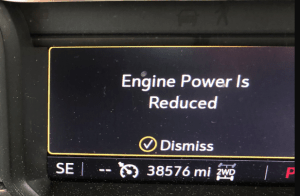How to Fix a Slow Leak in Your Lawn Mower Tire and Keep Mowing with Confidence
Learn how to fix a slow leak in your lawn mower tire with our step-by-step guide. Keep your mower running smoothly and prevent costly repairs by addressing the issue early. Follow our expert tips and get back to mowing with ease.
Mowing the lawn can be a relaxing and satisfying activity, but it can quickly turn into a frustrating chore if your lawn mower tire starts to lose air. A slow leak in your lawn mower tire can make mowing difficult and even dangerous.
Not only can it affect the performance of your mower, but it can also lead to an uneven cut or even a flat tire if not addressed promptly.
Luckily, fixing a slow leak in your lawn mower tire is a simple and straightforward process that can be done with basic tools and a little bit of know-how.
In this article, we will guide you through the steps you need to take to fix a slow leak in your lawn mower tire and keep your mower running smoothly.
Identifying the Problem
The first step in fixing a slow leak in your lawn mower tire is to identify the problem. Before you start taking your tire apart, you need to know where the leak is coming from. Here are some signs that your lawn mower tire has a slow leak:
- The tire looks visibly low on air
- The tire feels softer than usual
- You hear a hissing sound coming from the tire
Once you have identified the problem, it’s time to move on to the next step.
Removing the Tire
To fix a slow leak in your lawn mower tire, you will need to remove the tire from the mower. Here are the steps you need to take:
- Turn off the lawn mower and set the parking brake.
- Use a tire pressure gauge to check the air pressure in the tire.
- Use a jack or a block of wood to lift the mower off the ground.
- Remove the lug nuts that hold the tire in place using a lug wrench.
- Carefully remove the tire from the mower.
Finding the Leak
Now that you have removed the tire, it’s time to find the leak. Here are some steps you can take to locate the source of the slow leak:
- Fill a bucket with soapy water.
- Inflate the tire to its recommended pressure.
- Use a brush to apply the soapy water to the tire.
- Look for bubbles forming on the surface of the tire. This indicates the location of the leak.
Once you have found the leak, you can move on to the next step.
How to fix a leaky lawn mower tire
There are several ways to repair a slow leak in your lawn mower tire. Here are some of the most common methods:
Patching the Tire
If the leak is caused by a small puncture, you can patch the tire using a tire patch kit. Here’s how to do it:
- Clean the area around the leak using a wire brush.
- Apply a tire patch to the leaky area.
- Press down on the patch firmly.
- Use a tire patch roller to ensure a tight seal.
- Wait at least 24 hours before inflating the tire again.
Using Lawn Mower Tire Sealant
If the leak is caused by a small hole or crack, you can use tire sealant to fix it. here is how to seal lawn mower tire to rim
- Clean the area around the leak using a wire brush.
- Insert the tire sealant into the tire valve stem.
- Inflate the tire to its recommended pressure.
- Drive the mower around for a few minutes to allow the sealant to spread around the tire.
Replace the lawn mower tire
If the leak is caused by a larger puncture or a damaged tire, you may need to replace the tire altogether. To do this, you will need to purchase a new tire that is compatible with your lawn mower model. Here’s how to replace the tire:
- Remove the damaged tire from the rim using a tire spoon.
- Clean the rim with a wire brush.
- Insert the new tire onto the rim.
- Use a tire spoon to push the tire onto the rim.
- Inflate the tire to its recommended pressure.
- Reattach the tire to the mower using the lug nuts and lug wrench.
Putting the Tire Back On
Once you have repaired or replaced the tire, it’s time to put it back on the mower. Here are the steps you need to take:
- Place the tire back onto the mower.
- Tighten the lug nuts using a lug wrench.
- Lower the mower back onto the ground.
- Use a tire pressure gauge to check the air pressure in the tire.
Maintaining Your Tires
Preventing a slow leak in your lawn mower tire is much easier than fixing it. Here are some tips to help you maintain your tires:
- Check the air pressure in your tires regularly.
- Keep your tires clean and free from debris.
- Avoid driving over rough terrain or sharp objects.
- Replace your tires when they become worn or damaged.
Conclusion
Fixing a slow leak in your lawn mower tire doesn’t have to be a difficult or expensive task. By following the steps outlined in this article, you can quickly and easily repair or replace your tire and get back to mowing with confidence.
Remember to regularly check the air pressure in your tires and take steps to prevent damage to them. With proper maintenance, your lawn mower tires will last for many mows to come.
Frequently Asked Questions
Can a tire with a slow leak be repaired?
Yes, a tire with a slow leak can usually be repaired. The repair process typically involves locating the source of the leak, removing the tire from the rim, and patching the hole from the inside.
Does tire sealant work on lawn mower tires?
Yes, tire sealant can work on lawn mower tires. However, it’s important to use a sealant that is specifically designed for small tires like those on lawnmowers
How do you seal a small lawn mower tire?
To seal a small lawn mower tire, use a tire sealant such as Slime or Fix-a-Flat. Remove the valve core, deflate the tire, inject sealant, re-inflate to the recommended pressure, and let sit for a few hours. Follow the manufacturer’s instructions and note that sealants are a temporary fix.
What is the best thing for a slow leak in a tire?
The best thing for a slow leak in a tire is to use a tire sealant, such as Slime or Fix-a-Flat.



